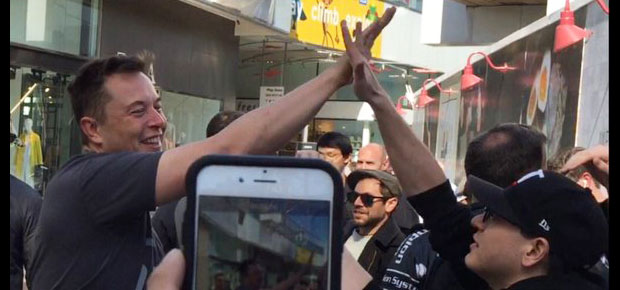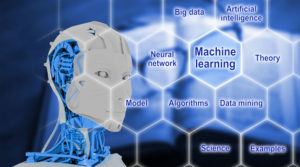Elon Musk on Wednesday introduced a second master plan for Tesla, a follow-up to the vision he shared 10 years ago.
The original master plan is now in the final stages of execution, he said.
The refresh sketches out a multiyear, four-pronged strategy that is about more than vehicles. Musk plans to advance an integrated solar-roof-with-battery product, create a ride-sharing program, and further develop the Tesla autopilot technology.
Investors seemed unimpressed — Tesla stock fell Thursday following the announcement. However, by mid-day Friday, the share price appeared to be recovering somewhat.
More Than Consumer Cars
Tesla thus far has focused on premium electric powered sedans and SUVs. The automaker will continue to work within this segment and will introduce a new compact, lower-cost SUV, according to Musk. This is consistent with his original plan’s focus to build on the success of low-volume vehicles to build medium-volume, and eventually mass market, high-volume vehicles.
However, there’s more to Musk’s master plan than development of mass-market electric cars. In addition, Tesla will develop two other types of electric vehicles, including heavy-duty trucks and high passenger-density urban transports.
Both are already in the early stages of development and should be unveiled next year, Musk said, noting that the Tesla Semi will offer a substantial reduction in cargo transport costs.
Musk’s vision includes development of a smaller bus designed for dense urban markets, which could accommodate wheelchairs, strollers and bikes.
“The automotive industry is in the crux of witnessing the most transformational change since the launch of the Ford Model T,” said Vishwas Shankar, mobility research manager at Frost & Sullivan.
“The transformational shift is seen through the ongoing autonomous testing and electrification, and the rise of mobility service providers and last-mile logistics service providers,” he told the E-Commerce Times.
“Elon is reinforcing the importance of Tesla’s innovation to lead the change,” Shankar continued. “Tesla’s strength is the existing internal test beds and its investments in Gigafactory and SolarCity to create and disrupt new customers and mobility segments.”
Beyond Cars
The master plan also highlights greater integration between Tesla and some of Musk’s other ventures, including SolarCity, which is focused on the deployment of rooftop solar power.
Musk also envisions a fleet of customer-owner Tesla vehicles providing ride-sharing opportunities, along with a revenue stream for the individual owners.
“One thing that shocked me is that this is much more a long-term vision than the original master plan,” said Christopher Robinson, research associate at Lux Research.
“This is not a 10-year plan,” he told the E-Commerce Times. “This is not a blueprint — this is a long-term list of goals.”
Taking On Incumbent Vehicles
Tesla’s strategy remains quite different from that of early automakers and industry pioneers as they entered the market.
“One hundred years ago, there was no incumbent technology for cars besides horses,” observed Robinson.
“Now Tesla has to battle an incumbent and has to convince mainstream drivers that there is another option besides gasoline combustion-driven vehicles,” he said.
“However, Tesla has already been able to show that electric vehicles are not just for the rich, and we’re seeing that there is a market for (US)$30,000 premium mass market vehicles,” Robinson noted. “The market for that is huge and … it will likely only grow.”
The Bigger Picture
Another big takeaway from Musk’s new master plan is the way it diverges from the approach of auto pioneers like Henry Ford.
Musk isn’t limiting Tesla to mobility solutions, suggested Stephanie Brinley, senior analyst at IHS Markit Automotive.
“Ford’s mission was to get everyone into cars, but Tesla is really looking to accelerate adoption of energy and how we power our homes as well as cars,” she told the E-Commerce Times.
“SolarCity is the cog that will help Tesla vehicles and the homes that power the vehicles not to be dependent on the grid,” added Frost’s Shankar.
“It is a very likely scenario. However, the question remains if Tesla will be the first to achieve it, as many other manufacturers — such as GM, Volvo Cars and Daimler Trucks — are very well on the path to achieve most of the goals Elon Musk mentioned,” he noted.
“Transportation is just part of this, and a lot of what he is trying to do, including EV propulsion for trucks, is not unique to Tesla,” IHS’ Brinley suggested. “As he works to execute these ideas, the competition is going to be fierce.”
Competing Globally
The competition that Musk faces with Tesla and his other ventures likely will heat up, especially as it’s not limited to the major automakers.
“Tesla is no longer competing for the short-term business of automotive with traditional auto OEMs like Ford, GM or the like,” said Franco Gonzalez, senior technology analyst at IDTechEx.
“He is making a clear signal they are competing in the game of vertical integration in future energy systems against [China-based electric vehicle and battery maker] BYD,” he told the E-Commerce Times.
“The challenge for Tesla is not selling cars, home batteries or potentially future buses, but scaling up manufacturing capacity to satisfy demand, this including the Gigafactory,” Gonzalez added.
Even greater may be the “short-term minded shareholders of Tesla that do not understand that Tesla is a long-term investment,” he said.
Musk’s greatest challenge of all could be convincing lawmakers that Tesla’s technology innovations are safe — especially following this year’s accident involving a vehicle using its Autopilot system.
Federal regulations represent “one of the largest hurdles that Musk is going to have to clear,” said IHS’ Brinley. “That could be greater than his other challenges right now.”






















































Social Media
See all Social Media